Nitiprakasika (Critical Analysis)
by S. Anusha | 2016 | 34,012 words
This page relates ‘Vyuhas—Composition’ of the study on the Nitiprakasika by Vaisampayana which deals primarily with with Dhanurveda, i.e., the science of war, weapons and military strategies of ancient Indian society. It further contains details on Niti-shastra, i.e., the science of politics and state administration but most verses of the Nitiprakashika deal with the classification and description of different varieties of weapons, based on the four groups of Mukta, Amukta, Muktamukta and Mantramukta.
Vyūhas—Composition
The elucidation on how to distribute the army units in the various parts of the vyūha follows a classification.
The vyūha has in general seven parts as: (Nītiprakāśikā VI. 11): [...]
- uras (front leading portion),
- kakṣa [kakṣau] (two flanks),
- pakṣa [pakṣau] (two wing portions),
- madhya (central part),
- pṛṣṭha (the hind part),
- pratigraha (the reserve-army) and
- koṭī (the extreme part of the tail or the sides)
The king is further instructed to place the elephants in the front, chariots behind them and horses in the flanks for gaining victory. Moreover, depending on the situation in the battlefield and the battle-formation of the enemy, the king can send chariots or horses first to be followed by elephants, horses, infantry; chariots, elephants, infantry; horses, chariots and elephants respectively. The king, intent on victorious expedition is advised to be at the helm of the affairs and personally supervise the arrangements.
He is advised to keep his followers ready behind the army (Nītiprakāśikā VI. 12-4):
[...]
The king has to send the brave, smart warriors and spies in the front, and has to surround him with well-armoured chariot horses (Nītiprakāśikā VI. 24-5):
[...]
(a) Daṇḍavyūhas:
The enumeration of the names of the sub-varieties of daṇḍavyūha are almost similar to both Nītiprakāśikā and Kāmandakīya-nītisāra except for a few. At the same time these few names also read differently in the three available editions of Nītiprakāśikā as it has been noted earlier. When the two texts (Nītiprakāśikā & Kāmandakīya-nītisāra) are considered together, it could be seen that the text of Kāmandakīya-nītisāra is preferrable since the readings are vouchsafed by the commentaries while Tattvavivṛti the commentary of Nītiprakāśikā does not enumerate or discuss any of the sub-varieties separately. Preferring the reading of Kāmandakīya-nītisāra also solves the problem of the term vijaya occuring thrice in the text. Accordingly, on the basis of these two texts and the two commentaries of Kāmandakīya-nītisāra namely Jayamaṅgalā and Upādhyāya-nirapekṣavyākhyā, the vyūhās are represented in line drawings here. The names are given as in Kāmandakīya-nītisāra since its commentaries explain the composition.
(1) Pradara[1] –The array with the flanks projected forward in a daṇḍavyūha. It can be formed as:
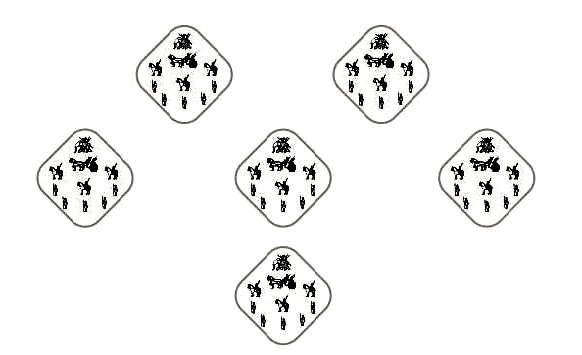
Note: Each unit in the array is as follows:
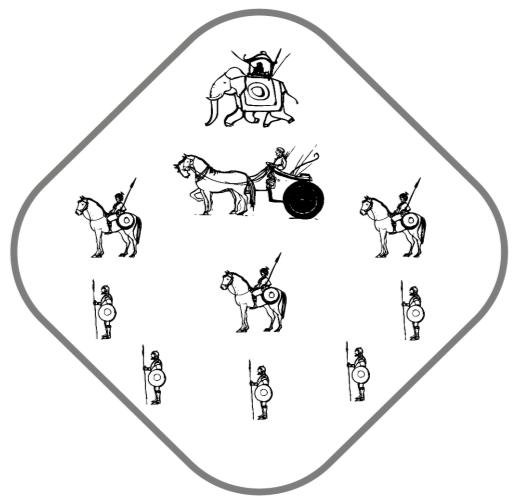
(2) Drḍhaka[2] –The array with both the flanks projected forward in a daṇḍavyūha. It can be formed as:
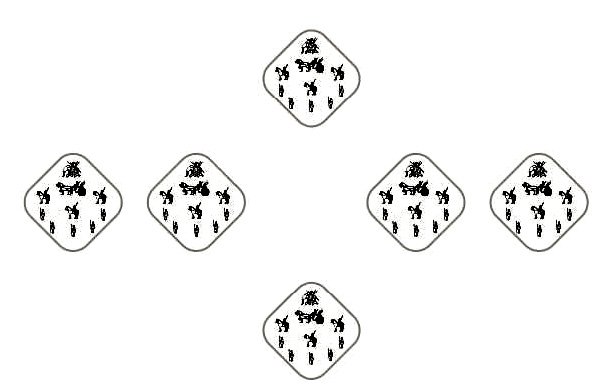
(3) Satya (Asahya)[3] –The array with wings of great length:
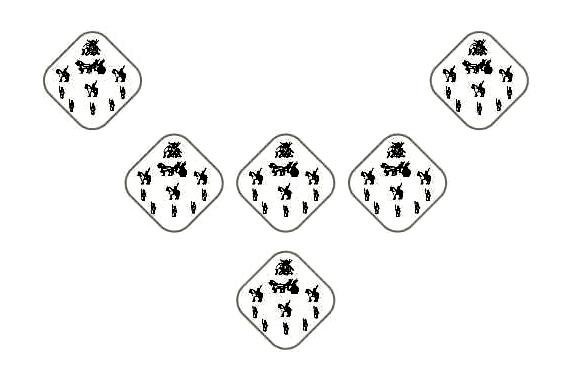
The next three vyūhas are counterparts of the earlier three. Hence:
(4) Cāpa[4] –It is the opposite of pradara with the wings projecting forward:
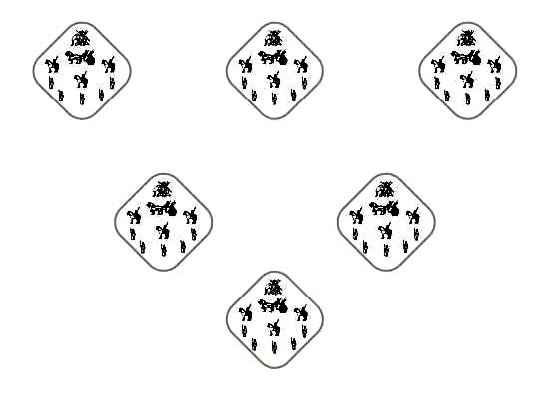
(5) Bhūsvakṣi Cāpakukṣi[5] –The opposite of drḍhaka with the wings and flanks projected forward is this formation.
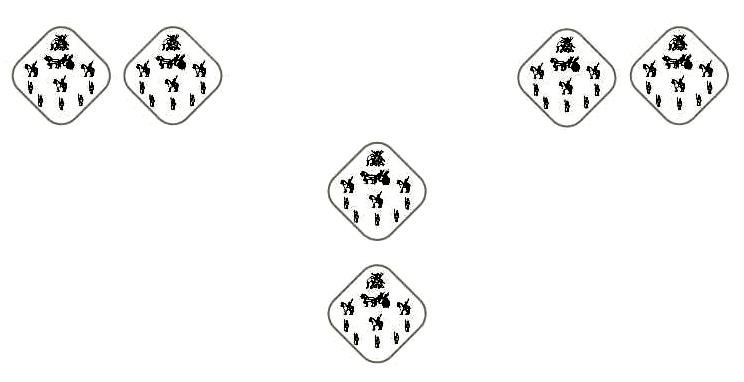
(6) Supratiṣṭha[6] –The opposite of Asahya with the wings at the sides:
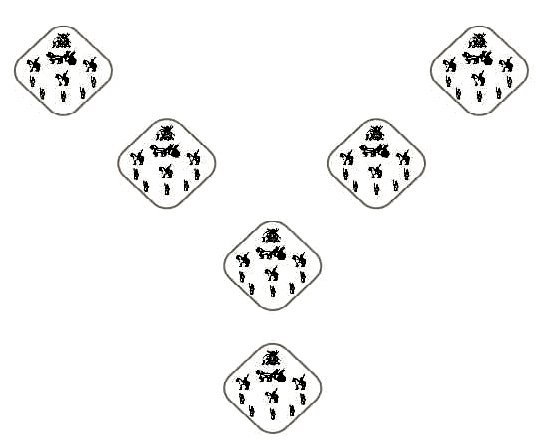
(7) Apratiṣṭha[7] –It is the array where the wings are stretched over the uras.
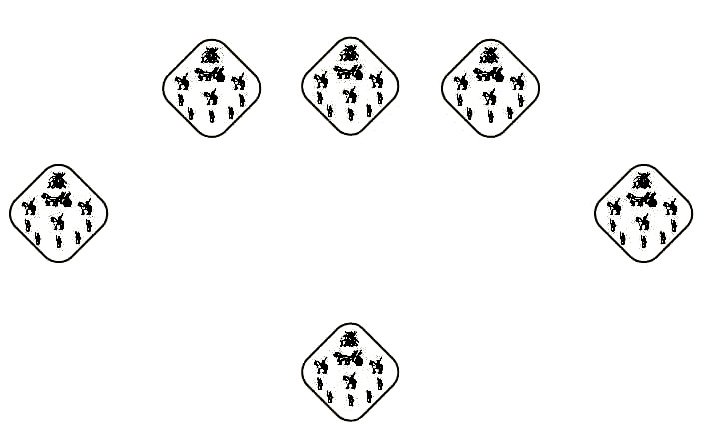
(8) Śyena[8] –The reversal of the earlier arrangement, that is when the pakṣas do not extend over the uras and kakṣa:
.jpg)
(9) Vijaya[9] -When on the array, the pakṣa is replaced by sthūnākarṇa which is explained as dviguṇāntya or two times pakṣa it is vijaya:

(10) Sañjaya[10] –When the cāpavyūha is placed in the pakṣa, the array then is called sañjaya:

(11) Viśālavijaya[11] –When the sthūnā is doubled it is the array called viśālavijaya:

(12) Sūcī[12] -When the kakṣa, pakṣa and uras arrangements are settled one over the other moving upwards it is sūcīvyūha:

(13) Sthūnākarṇa[13] –When the pakṣa is doubled in its place, the array is called sthūnākarṇa:
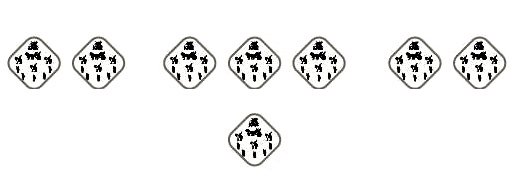
(14) Camūmukha[14] –When the pakṣa is made four-fold and is set upwards, it is called camūmukha:
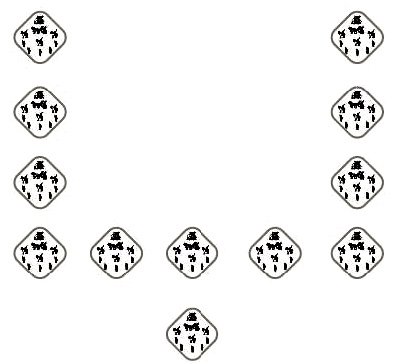
(15) Sukhāsya (Jhasāsya)[15] –The opposite of camūmukha with the four-fold pakṣa set one below the other is jhasāsya:
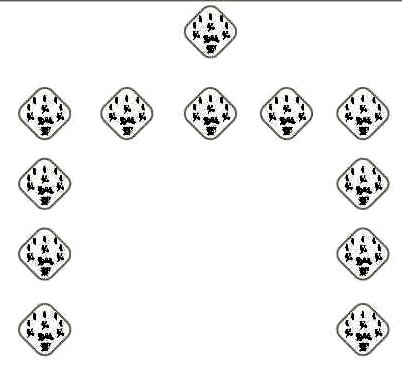
(16) Valaya[16] –When the daṇḍa is arranged with ten groups of forces:
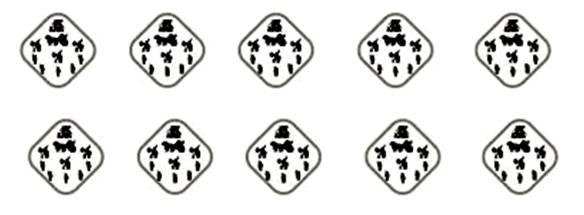
(17) Durjaya[17] -When the four-fold daṇḍa comprising of 20 groups of forces is arrayed:
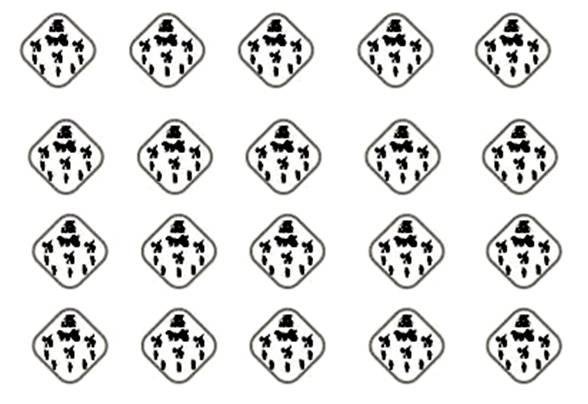
(b) Bhoga Vyūhas:[18]
(1) Gomūtrikā–The array which resembles the line marked by the gomūtrikā:
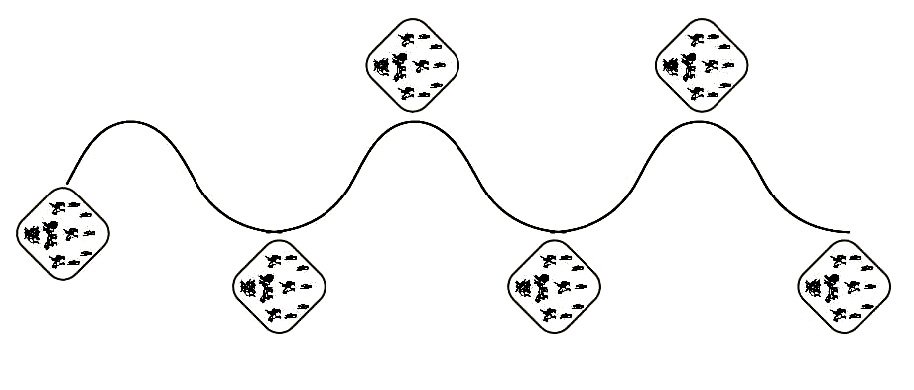
(2) Haṃsikā–The sideways movement of a haṃsa as it walks:
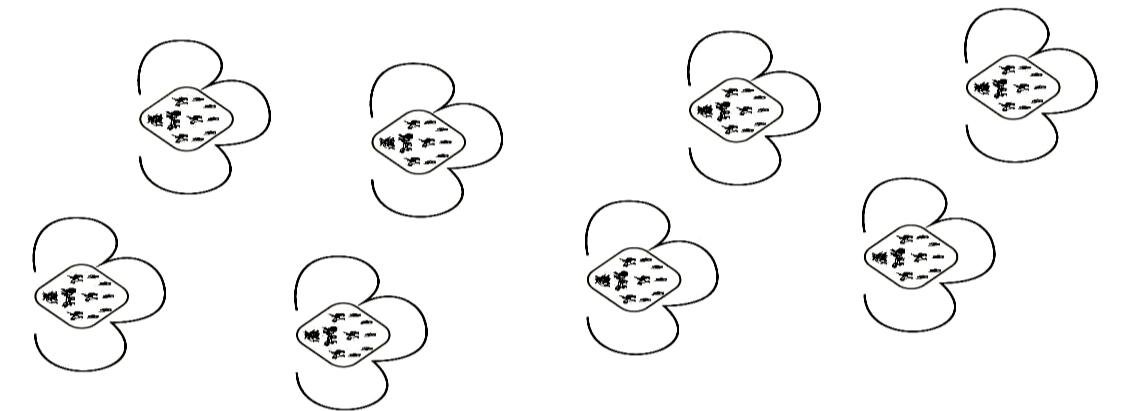
(3) Sañcārī–Moving here and there in some order. Kāmandakīya-nītisāra calls this ahisārī:

(4) Śakaṭa[19] –When a daṇḍavyūhā is formulated onto the uras doubled it is śakaṭa:
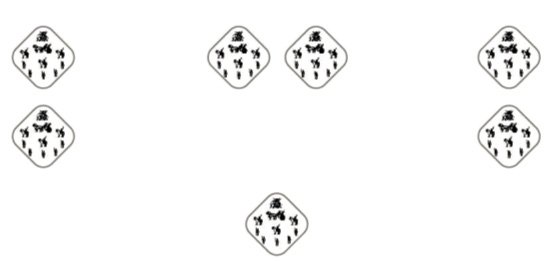
(5) Karapatanti–In this, in the centre of two pakṣas elephants and horses are stationed:
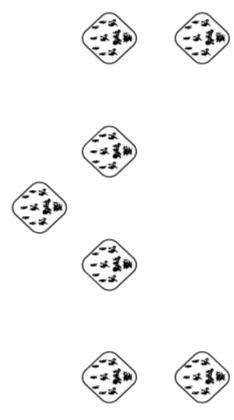
(c) Asamhata Vyūhas:
1 & 2. Ardhacandra & Karkaṭaśṛṅgī: A group of three units of army form these arrays:
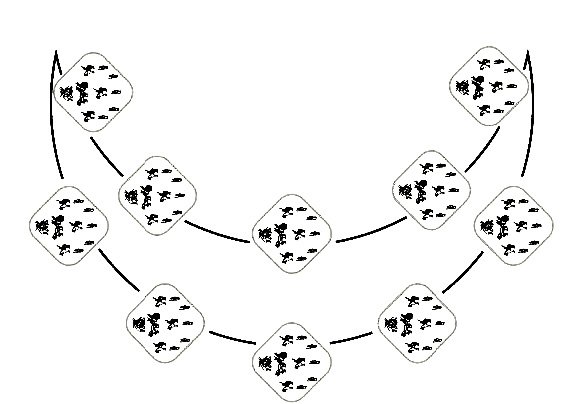 |
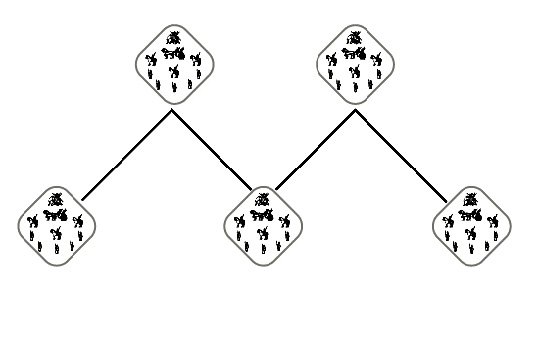 |
3. Kākapadī: Four army units together form this array:
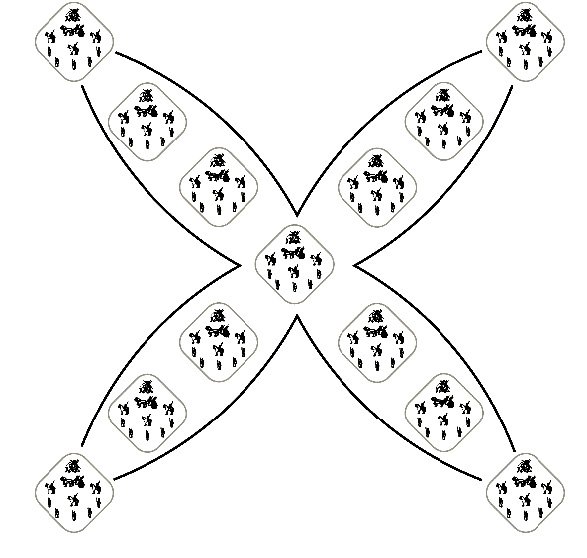
4 & 5. Vajra & Godhikā: Formed by a group of four units of army:
Vajra:
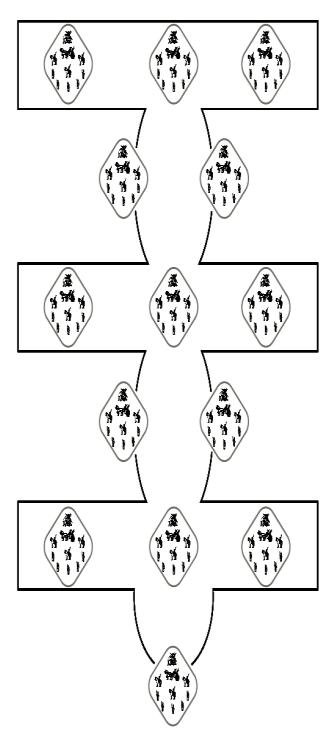 |
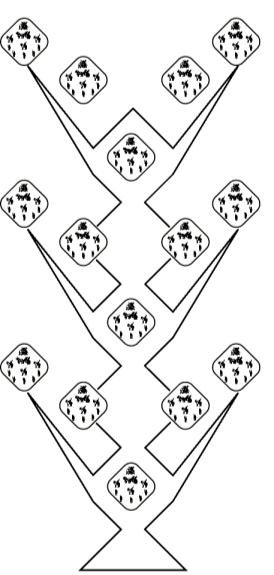 |
Godhika:
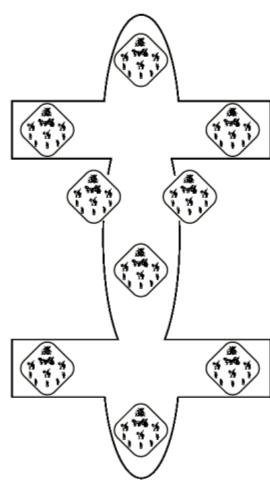
It is not easy to figure out the explanation given in the commentary on Kāmandakīya-nītisāra as to movements of the army from kakṣa and pakṣa towards and away from uras, on the basis of which of these vyūhas are formed.
(d) Maṇḍala Vyūhas:
(1) Sarvatobhadra–It is also termed sarvatomukha; when the different units of the army is arrayed in such a way to face all the directions it is called sarvatobhadra:
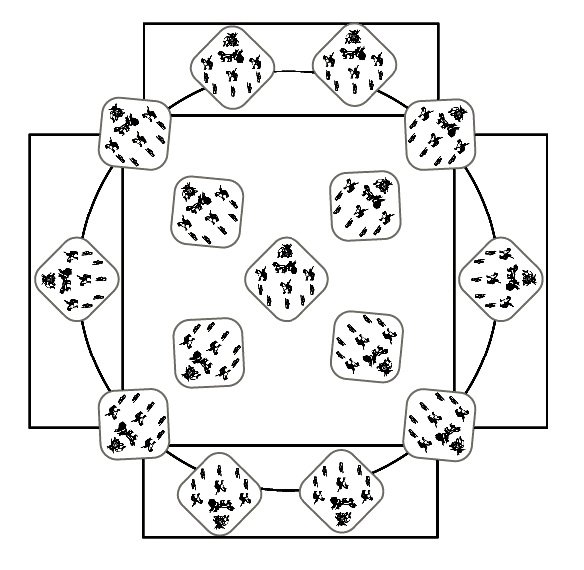
(2) Durjaya: When the kakṣa is doubled along with uras it becomes invincible; hence the name durjaya:
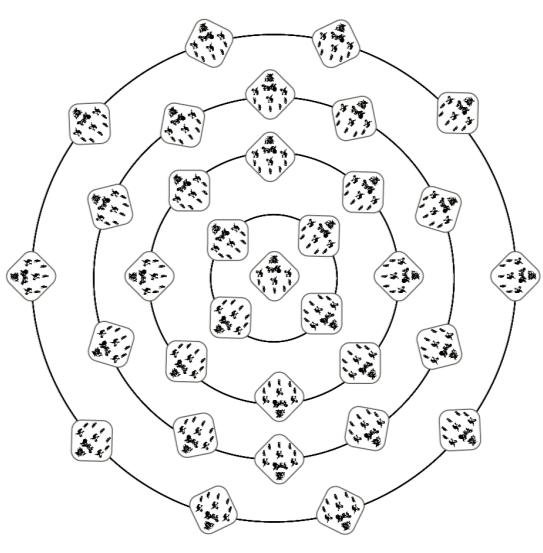
Footnotes and references:
[1]:
Kāmandakīya-nītisāra, p. 450: [...]
[2]:
loc.cit: [...]
[3]:
loc.cit: [...]
[4]:
loc.cit: [...]
[5]:
ibid, p. 451: [...]
[6]:
loc.cit: [...]
[7]:
[...]
[8]:
[...]
[9]:
[...]
[10]:
[...]
[11]:
[...]
[12]:
[...]
[13]:
[...]
[14]:
[...]
[15]:
[...]
[16]:
[...]
[17]:
[...]
[18]:
Kāmandakīya-nītisāra. 35. 48-9:—Here Haṃsikā, Sañcārī of Nītiprakāśikā are replaced by Ahisārī and Makara; Karapatanti is read Paripatantikā.
[19]:
Kāmandakīya-nītisāra adds after this makara wherein it is the reverse of śakaṭa. The next paripatantikā of Kāmandakīya-nītisāra is expansion of makara.
